Idea by
Rafi Segal, Marisa Morán Jahn, Ernst Valery
Call for ideas 2021
Carehaus
Carehaus
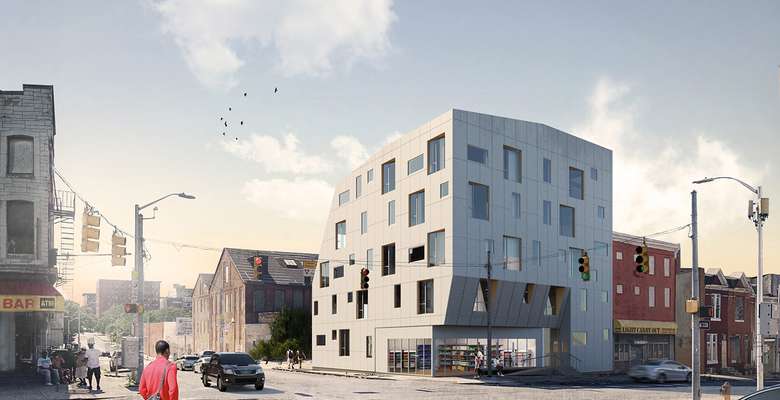
- New alliances
Covid-19 pandemic, the Elderboom, and increasing climate disasters pronounce the fractures of our caregrid. We have become increasingly aware that as a society, we have yet not begun to design for the increasing number of aging, disabled, or visually impaired people — nor design for those who care for them. Carehaus is founded on the belief that older adults, disabled people, and those who care for them are integral to the well-being of our communities. We propose a new model of affordable care and housing: residents live in independent units clustered around communal spaces where care, meals, and activities are shared. In exchange for their labor, caregivers receive good wages, childcare, and various benefits. Carehaus leverages the power of architecture to enable dignified care for elders and sustainable jobs and living conditions for caregivers. Our first site takes place in a historically divested neighborhood in Baltimore; we are looking towards other sites with urgent care needs.
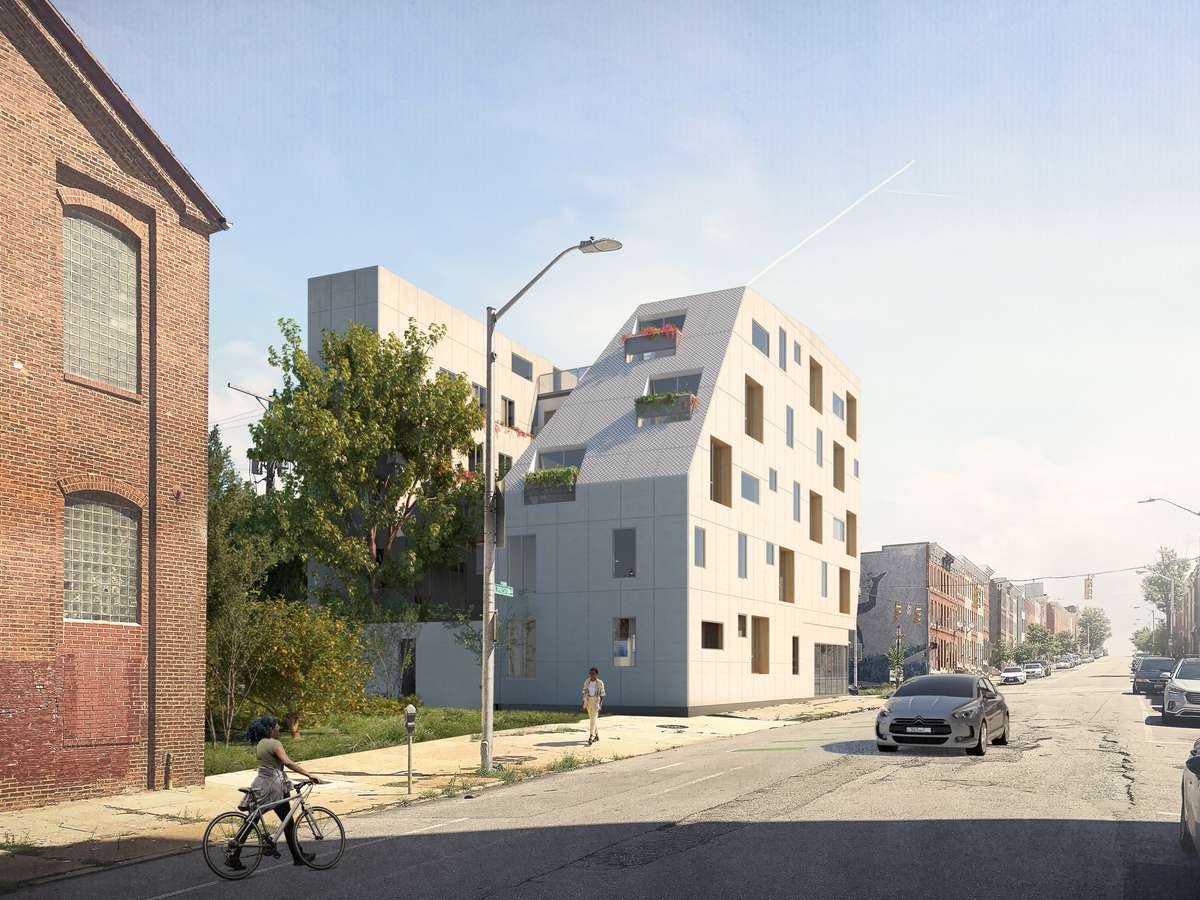
Development without displacement: Carehaus activates a corner in Johnston Square, a historically-divested neighborhood in Central Baltimore. Retail space is located on the street corner, a shared common space linked to the courtyard garden on ground level is accessed from both street and alley.
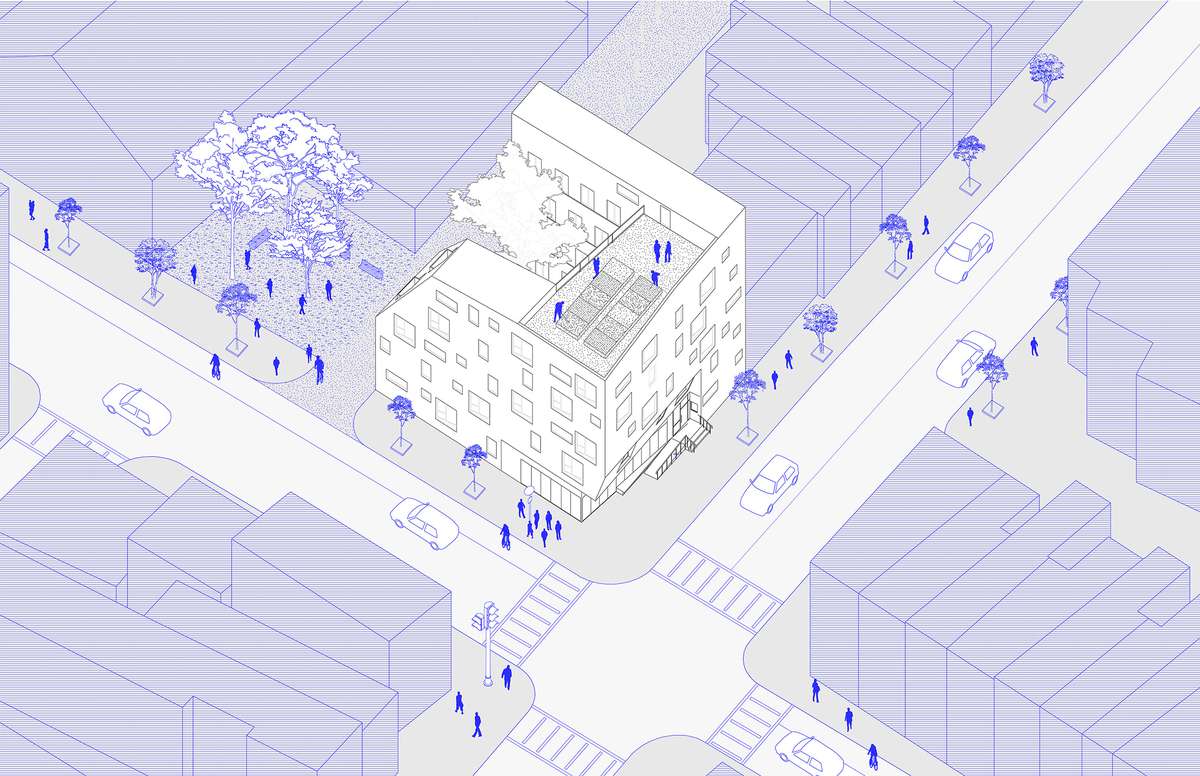
Situated in the corner between Greenmount and Preston streets, Carehaus Baltimore responds to urban context with the corner retail and public art on the facade.
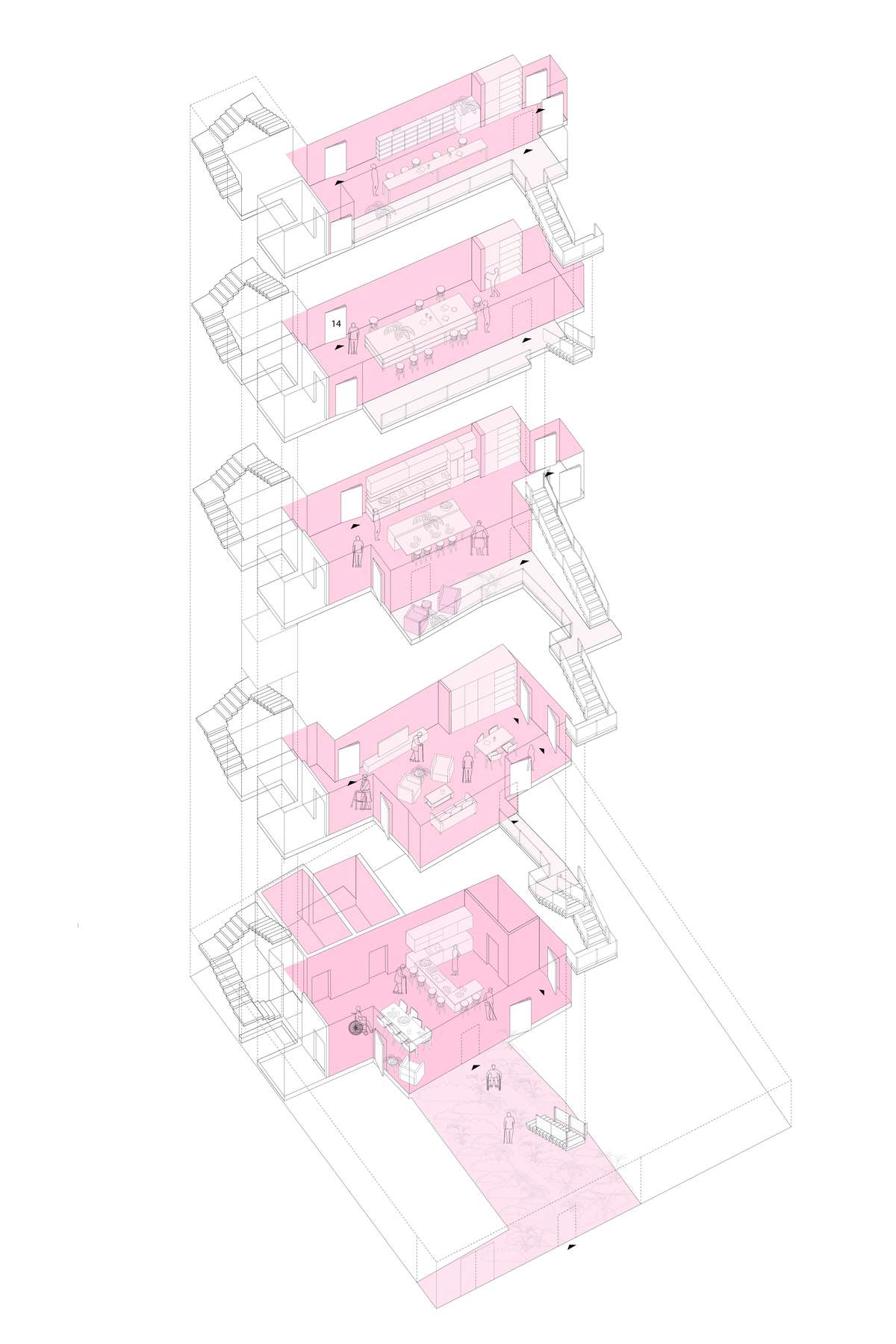
Designs for care and living: Each shared space has a dedicated program, including kitchen and dining space, art studio, lounge, and library. Every floor has a dedicated shared space (kitchen, lounge, work space, and others) and an open terrace facing the courtyard. An exterior stair connects the large roof garden to the terraces and the ground level courtyard. Carehaus’ communal areas enable shared meals, past times, relaxation, gardening, art and fitness classes, and more.
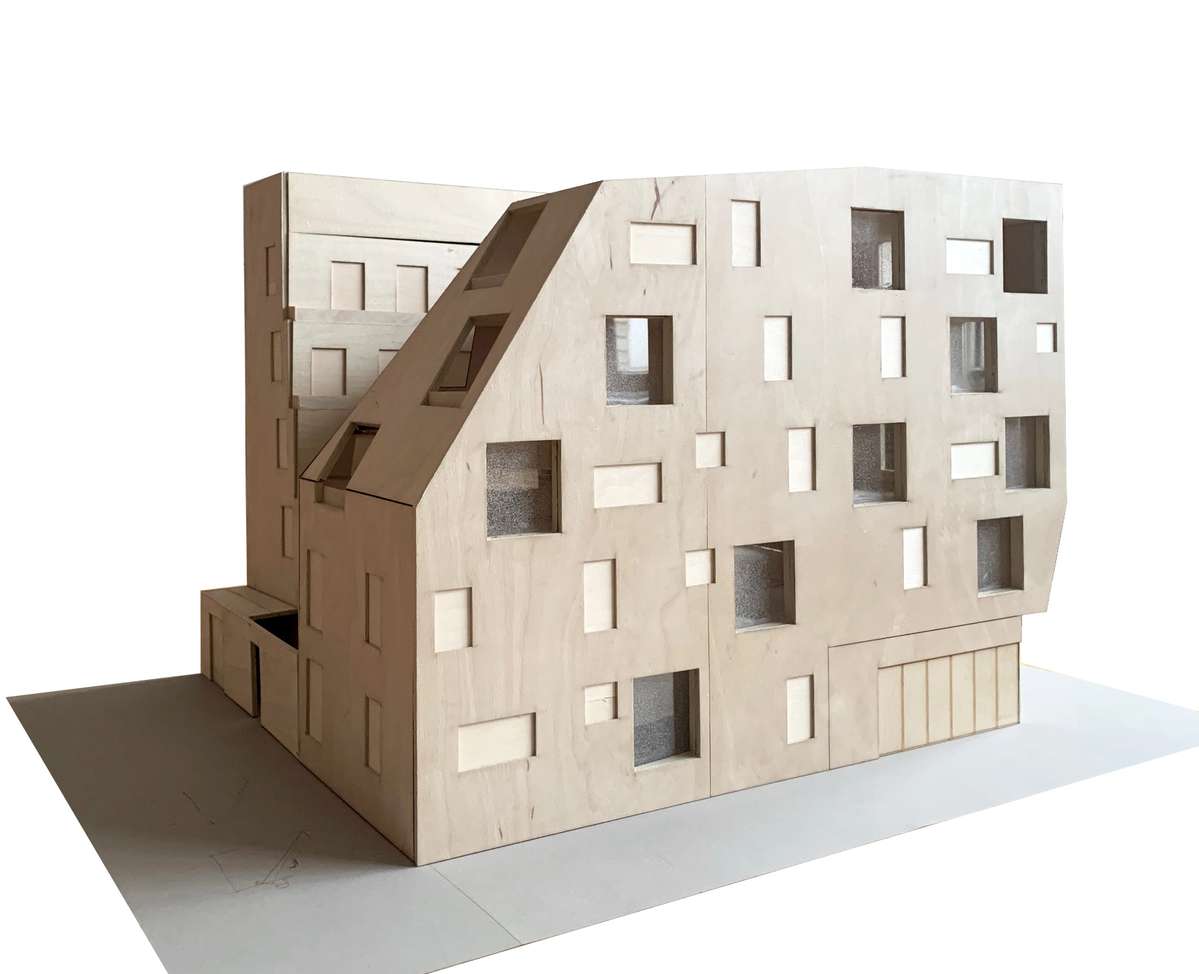
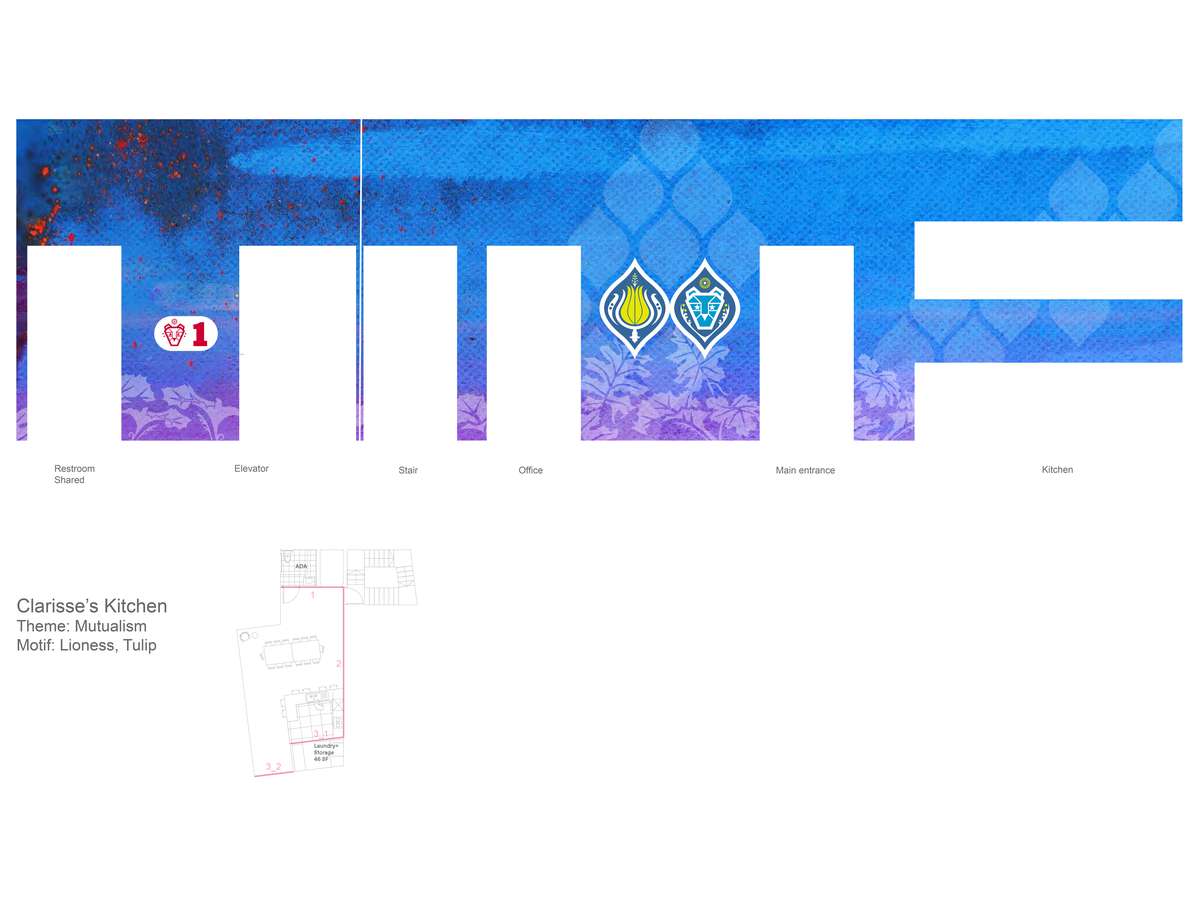
Integrating art into Carehaus activates cultural heritages, improves cognitive health, and fosters a unique sense of place. Inspired by Clarisse Castor, a Haitian-American working mother whose generosity anchored her community, one floor of Carehaus Baltimore’ wallpaper features motifs of a tulip (symbol of love) and lioness (symbol of family cohesion). Distinct patterns enable wayfinding for the memory-impaired; blue-toned hues optimize lip reading for the visually impaired.
Carehaus
Carehaus

- New alliances
Covid-19 pandemic, the Elderboom, and increasing climate disasters pronounce the fractures of our caregrid. We have become increasingly aware that as a society, we have yet not begun to design for the increasing number of aging, disabled, or visually impaired people — nor design for those who care for them. Carehaus is founded on the belief that older adults, disabled people, and those who care for them are integral to the well-being of our communities. We propose a new model of affordable care and housing: residents live in independent units clustered around communal spaces where care, meals, and activities are shared. In exchange for their labor, caregivers receive good wages, childcare, and various benefits. Carehaus leverages the power of architecture to enable dignified care for elders and sustainable jobs and living conditions for caregivers. Our first site takes place in a historically divested neighborhood in Baltimore; we are looking towards other sites with urgent care needs.
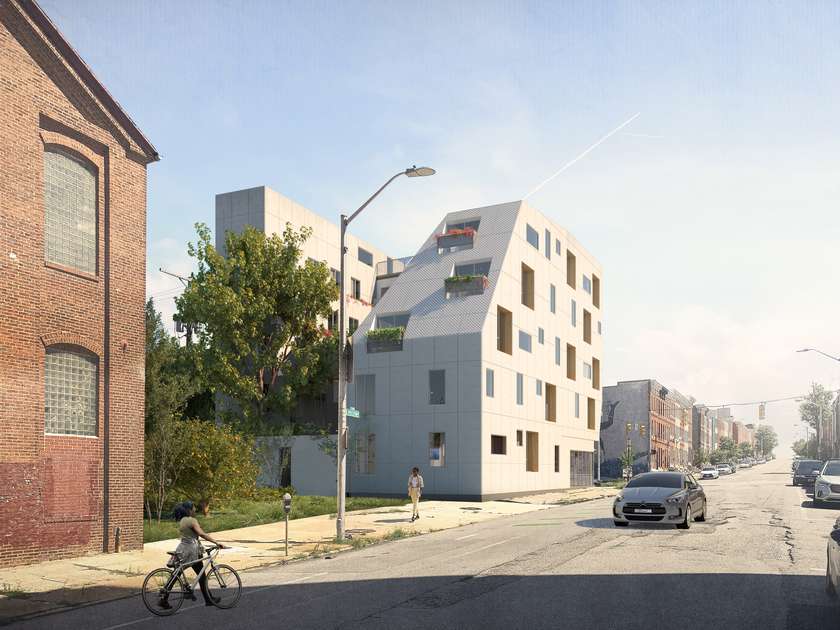
Development without displacement: Carehaus activates a corner in Johnston Square, a historically-divested neighborhood in Central Baltimore. Retail space is located on the street corner, a shared common space linked to the courtyard garden on ground level is accessed from both street and alley.
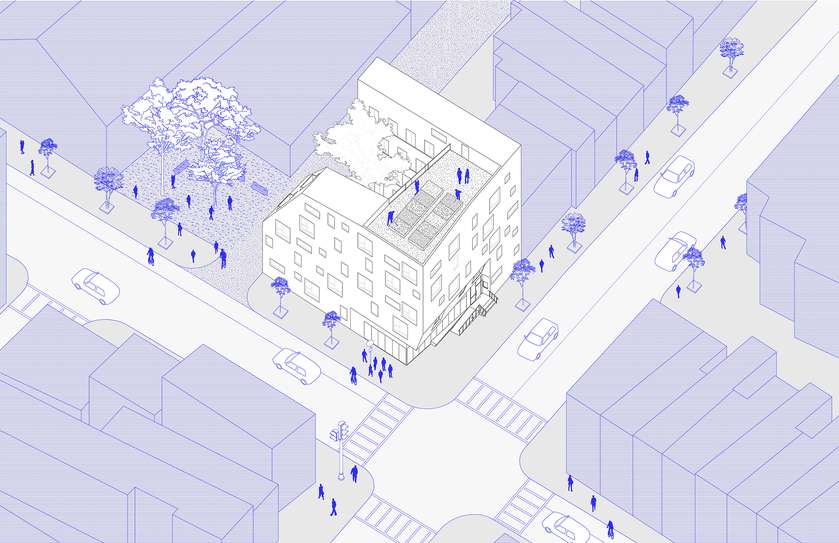
Situated in the corner between Greenmount and Preston streets, Carehaus Baltimore responds to urban context with the corner retail and public art on the facade.

Designs for care and living: Each shared space has a dedicated program, including kitchen and dining space, art studio, lounge, and library. Every floor has a dedicated shared space (kitchen, lounge, work space, and others) and an open terrace facing the courtyard. An exterior stair connects the large roof garden to the terraces and the ground level courtyard. Carehaus’ communal areas enable shared meals, past times, relaxation, gardening, art and fitness classes, and more.
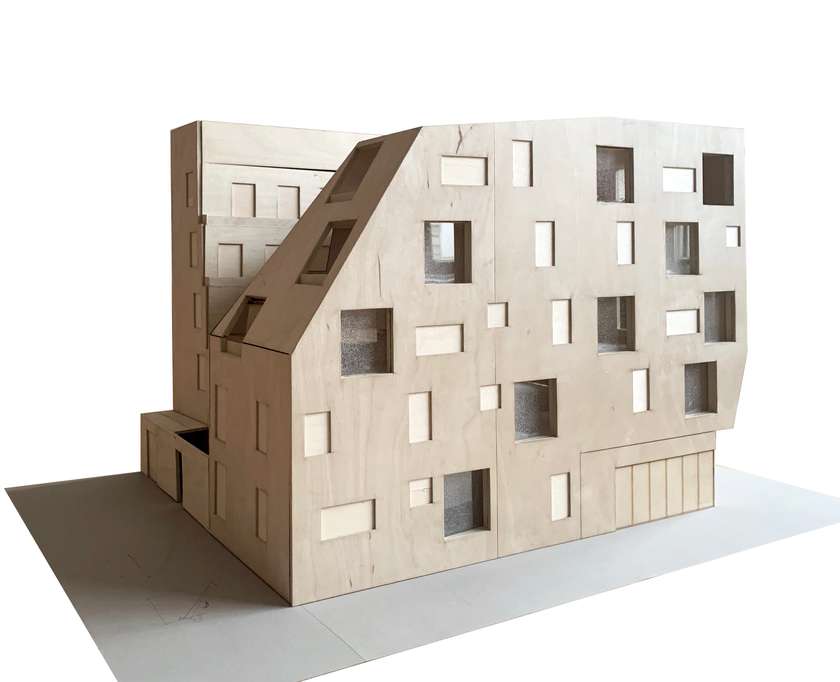
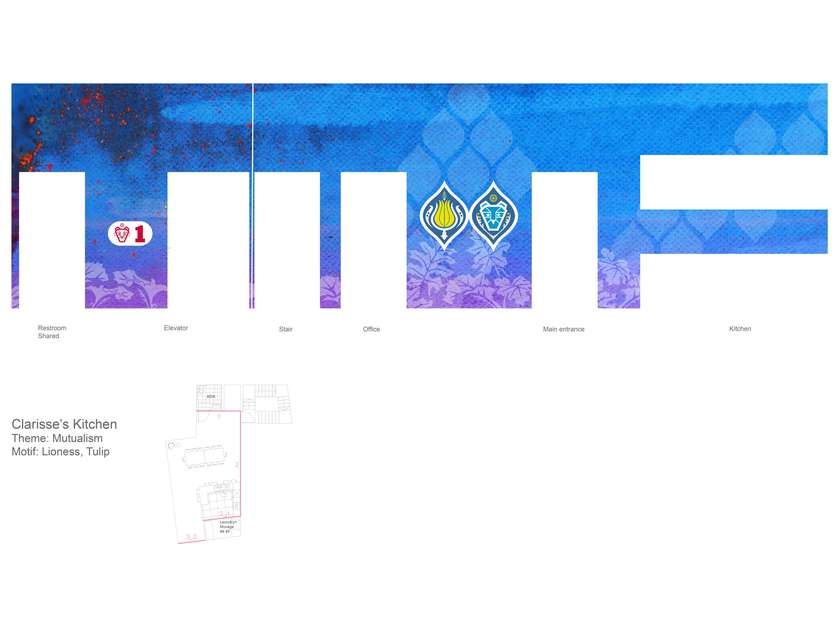
Integrating art into Carehaus activates cultural heritages, improves cognitive health, and fosters a unique sense of place. Inspired by Clarisse Castor, a Haitian-American working mother whose generosity anchored her community, one floor of Carehaus Baltimore’ wallpaper features motifs of a tulip (symbol of love) and lioness (symbol of family cohesion). Distinct patterns enable wayfinding for the memory-impaired; blue-toned hues optimize lip reading for the visually impaired.
